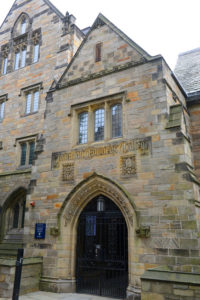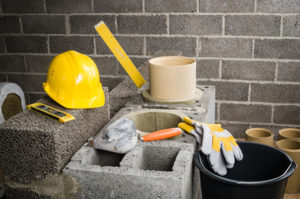Category: General
Famous Historical Buildings In Connecticut

One of the most notorious historical places in Connecticut is Fort Griswold. In 1781 Colonel Ledyard refused to surrender to the British troops. Unfortunately, after a brave fight, he and his troops were killed. This fort is open all day long.
Another important historical place is the so-called Fort Trumbull in New London, still in Connecticut. Nathan Hale’s Schoolhouse is another historical building that has had building restoration completed. It honors the memory of Nathan Hale, who taught there before going to the Revolutionary War.
Trinity Episcopal Church in Torrington is another famous historical building in this American region. The initial building was made out of wood.
James Gallup House is a revival style building which was also built in the 19th century. Its beauty and grace make it worth the effort of visiting this place.
Gurleyville Grist Mill is another historical building in Connecticut. It is a stone gristmill located on a hill. This old building is open to the great public during certain seasons.
The Mark Twain House and Museum is one very important landmark of Connecticut, which is located in Hartford. It is the place where Mark Twain wrote his most significant works, including The Adventures of Huckleberry Finn and The Adventures of Tom Sawyer.
Common Commercial Roofing Materials Used In New England

When choosing roofing materials for your commercial building in New England, you need to consider the climate, the cost of materials, the general affordability and the energy efficiency ratings.
The most commonly used materials for this area include single ply, modified bitumen, green roofing, metal roofing or BUR (built-up roofing).
There are two main types of single ply that are used for commercial roofing, namely EPDM and TPO. EPDM is the abbreviation of “Ethylene Propylene Diene Terpolymer” and is made of a synthetic rubber component that makes it flexible.
TPO stands for “thermoplastic polyolefin” and is popular because of its UV-reflecting properties. It is one of the most commonly used single ply option all throughout the USA, and in New England, also.
Green roofs refer to those types of commercial roofing CT systems that are covered with vegetation, usually planted over a waterproof membrane layer. This term may also be related to the use of green technology such as solar panels, cool roofs or photovoltaic panels.
Steel, aluminum, zinc and copper are among the most commonly used types of materials for commercial roofing. BUR or built-up roofs are made of several layers, offering top-quality protection against the outside elements such as harsh winds or heavy snowfalls.
Things to Consider Before Taking On A Historical Restoration Project
Restoring an historical building is a complex process, a project that is much more difficult than restoring modern buildings. Here are some important aspects that you need to bear in mind:
- Consider the building structure and the amenities first – the first thing you need is a structural evaluation of the building. For that, you will need a building restoration expert to check the condition of the walls, of the foundation, of the roof and of any important load-bearing component. You will need to do the same with plumbing, the electrical wiring and all the other amenities. The restoration process should always start with the structural elements and the amenities;
- Maintain the style of the building – historical buildings are all about character, so you will need to make sure that the ornaments and other, exterior and interior décor features are maintained. Take pictures of the building before the restoration starts and get all the ornamental elements recreated to be able to restore the building’s original beauty;
- Find out about the requirements comprised in local building codes – many states and regions have specific requirements when it comes to restoring historical buildings, so consulting local building codes is a very important preliminary step before the restoration is started.
Can Stone Be Installed Over a Brick Exterior?
If you are looking for an elegant solution to refresh the appearance of your building from the outside, stone, more precisely stone veneer is a great solution. Brick exteriors are great and durable, but after a while, the material starts crumbling – fortunately, brick buildings stay strong even when time seems to say its word, so you can easily refresh it by installing stone on the surface. Here are a few things that you should know about:
- Pay attention to preparing the surface – stone can be installed directly on the brick, but only after making sure that the brick provides a stable base for the veneer. The first step is the removal of any paint from the brick surface (you must never install stone on a painted wall). You can prepare the surface through washing or sandblasting – don’t stop until you achieve a surface that is porous, but no longer crumbling;
- Apply a layer of rough mortar or install cement board on the surface to enable the wall to receive the stone;
- Wait until the surface is completely dry;
- Choose the right type of veneer – stone veneer comes in three main types: artificial stone made from cement is attractive and easy to install, therefore suitable for DIY handling; natural stone is more expensive and also needs some experience to handle properly and faux stone, made from polyurethane.
There are many professional options to improve the exterior of your building from http://www.nemasonry.com, along with a wide range of exterior products and services.
How to Choose the Right Contractor for Home Renovation
Whether you are planning a small home repair project or a major overhaul, picking the right masonry restoration Connecticut contractor is essential for success. Here is how to hire the right specialist:
- Use every source of information available – ask everyone you know to recommend you contractors and search online for the right specialist, too. Check the reputation of all the recommended contractors – there are lots of great forums and review websites where you can find out how honest and knowledgeable local contractors are. You should also check the licenses of the contractors that seem right – you should only hire a contractor who has a valid license to work in your state;
- Contact the contractors on your list – personal contact is just as important as credentials and licenses. Call the contractors on your list, describe your project and invite them to see the job site – the way the contractors talk to you, how willing they are to explain the processes to you and to answer your questions will reveal a lot and will help you decide which one of them to hire;
- Ask for detailed cost estimates – getting written estimates is also an essential step in evaluating contractors. Obtain at least three estimates and compare them not only in terms of prices, but also in terms of quality and warranties.




















